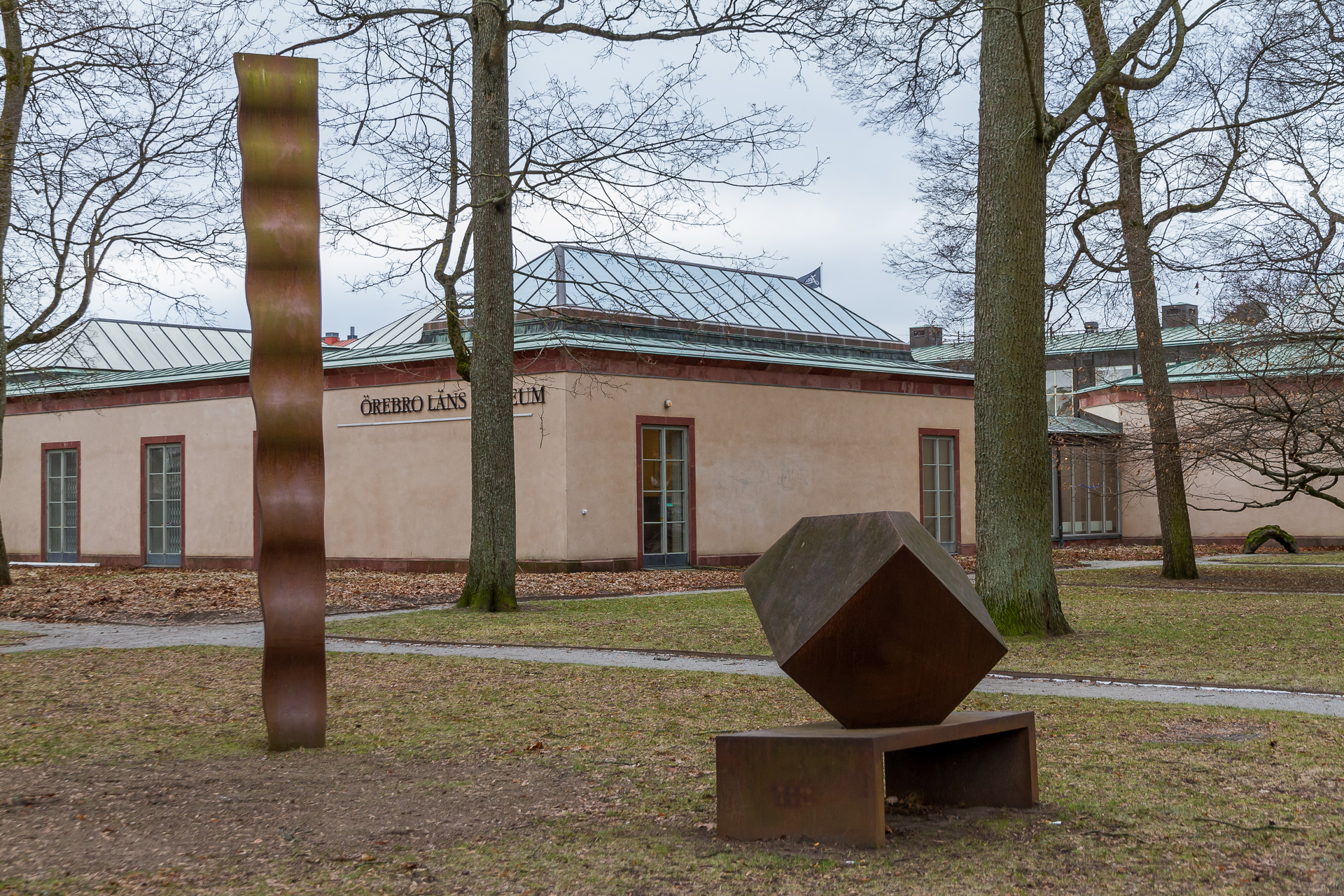Dürers kub (Dürer’s Cube)
The work is located in a park and consists of two parts. A square cube in dark steel balances on one corner of a foundation in the same material that resembles a simple bench. The upper corner, which now points towards the sky, appears to have been cut off with a sharp cut. A short distance away is another work of art by the same artist. Photos are a pillar that is also made of dark steel. It is about three to four meters high and slopes slightly. It is flat with a rhythmically undulating waveform

As its title reveals, the artist Lenny Clarhäll borrowed from his predecessor Albrecht Dürer in this work. Dürer was one of the great artists of the Renaissance, celebrated not least for his printmaking.
One of his most well-known copper engravings is called Melancholia I (1514) and in this work, we find the object that Clarhäll brought to three-dimensional life in his own work.
Melancholia I is something of a riddle and has been extensively debated by art historians. In the work, a melancholy angel sits surrounded by many cryptic objects, including the “cube”, an hourglass, compass, sphere, and scales. One of the many interpretations is that these things are meant to mark a connection between Dürer’s profession as a printmaker and painter and what was during the Renaissance known as “artes liberales”, or liberal arts.
The Renaissance was in many ways a historic turning point for art. During the Middle Ages, painters, sculptors, and others we now consider to be visual artists were then viewed as craftsmen. The liberal arts instead comprised theoretical knowledge such as grammar, geometry, and astronomy.
During the Renaissance, many visual artists attempted to raise the value of their art by showing its connections to the intellectual liberal arts. One possibility is therefore that Dürer drew his cube-like shape to show that he had knowledge of geometry.
Clarhäll’s sculpture Dürer’s Cube thus gives a nod to art history but can of course also be viewed as a sculpture in its own right. The sculpture is actually not a cube at all. How would you describe its shape?
Lenny Clarhäll was born in 1938 in Timmersdala. He studied at the Konstfack University of Arts, Crafts and Design and at the Royal Danish Academy of Fine Arts. He now lives and works outside Södertälje. Among his most notable works is the Minnesmärke över de stupade i Ådalen 1931 (Memorial to the Fallen in Ådalen 1931) in Lunde. At Kvarntorpshögen, you’ll find his sculpture group Malanganer (Malagans).
Konstverk: Dürers kub (Dürer’s Cube)
Konstnär: Lenny Clarhäll
År: 2012
Material: Corten steel
Placering: Slottsparken
Ägare: Örebro Municipality
Konstverkets position på karta
Publicerad:
Tack för ditt svar!
Berätta gärna vad vi kan göra bättre på den här sidan för att förbättra webbplatsen! Vi har ingen möjlighet att svara, men dina synpunkter är värdefulla för oss. Tänk på att inte skicka in personuppgifter. Om du vill ha svar på en fråga kan du istället använda formuläret ”Lämna en synpunkt”.
Om du ändå skickar in personuppgifter via detta formulär hanteras uppgifterna av Kommunstyrelsen och kan eventuellt lämnas vidare till annan verksamhet inom Örebro kommun i syfte att förbättra vår service.
Här hittar du mer information om hur vi hanterar personuppgifter.
Tack för ditt svar!
Du har nu hjälpt oss att förbättra orebro.se
